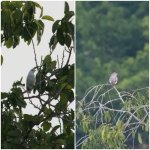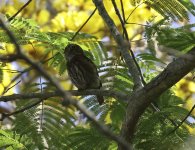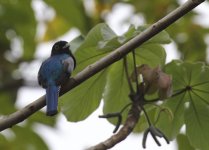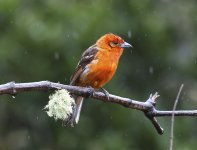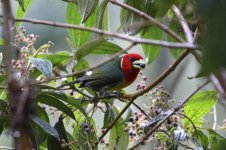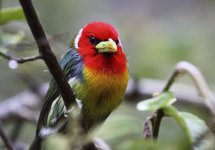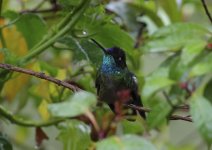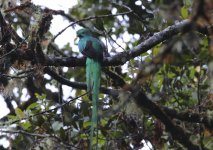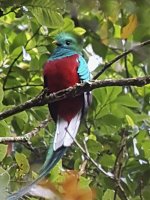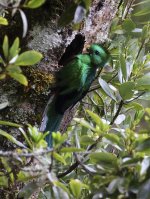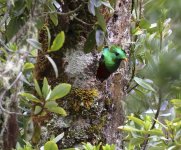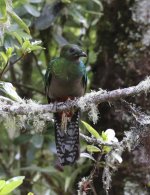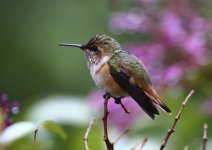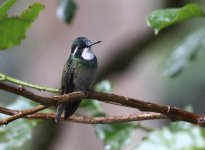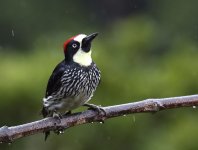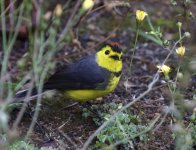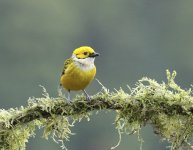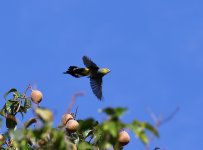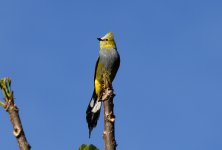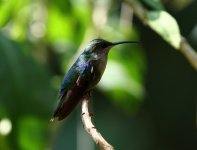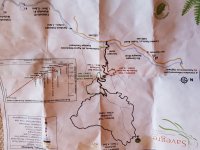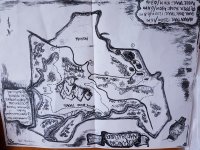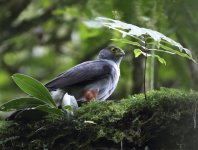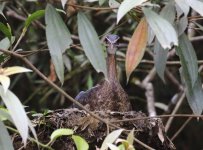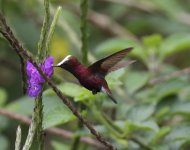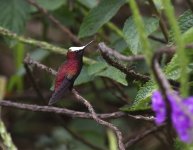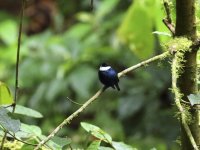Cerro Lodge to Savegre via coastal route.
Cerro Lodge to Savegre via coastal route.
As we were not doing the boat trip, we had a little more time, so we had a short explore of the area, the usual stuff, Turquoise Motmot, Hoffman’s Woodpecker, Rufous-naped Wren, Blue-Grey Tanager, Yellow-headed Caracara, Cinnamon Hummingbird then we added Black-headed Trogon and tried calling the Ferruginous-pygmy Owl and I found the cute little owl down the bottom of the trail a little distant for anything but a record shot but we did give the information to the Japanese birding group who were still around trying for decent photos when we left.
After breakfast we headed down the coast past the river Savegre and turned inland via San Isidro de el General then into the mountains on Highway 2 to San Gerardo de Dota, situated high in the mountains of the Talamanca mountain range, at an altitude of 2.600 meters above sea level, in the middle of the Upper Montane Cloud Forest.
First we had a last check for the Cotinga but without success, then we stopped at a Golf Course in Jaco and added Northern Jacana, Grey-headed Chacalaca, Least Grebe, Great-tailed Grackle, Black-bellied Whistling Duck and Black-crowned Tityra. We stopped for lunch just as the road climbed and added Charming Humminbird, Magenta- throated Woodstar, Roadside Hawk and Black-throated Blue Warbler at this mid elevation spot. Danny did well in recommending lunch / coffee stops nearly always with a few birds to see.
Our next stop was about hour before San Gerado at a garden with loads of feeders run by an expat Canadian, he also has rooms and some cottages and just charges a small fee US$5 towards the cost of fruit and provisions. I think we were just below 6000ft. We were after a few target species here, the easiest to see was Cherries Tanager, spilt since we were last in Costa Rica, to be honest while the female looks very different I couldn’t differentiate the male from Passerini’s. There were lots of Swallow-tailed Kites flying around but the real stars were the hummers; different species at each feeding area and area of the garden, there was Lesser Violetear, White-throated Mountain Gem, Violet Sabrewing, Talamanca Hummingbird(was Magnificent) and Stripe-tailed Hummingbird. There were also Silvery-throated tanagers and a Golden-bellied Flycatcher. Just when we though this place was perfect the mist and drizzle set in and you could see almost nothing – so we gave up and drove onto the lodge, without stopping as the paramo area was cloudy, wet and unwelcoming at this time.
We arrived at Savegre Hotel & Spa around 15.00 with just a little mist and agreed to meet up at 16.00, we were in room 122, a bit of a trek up the hill but it meant we had a good walk every time we went for a meal and we found a couple of really nice life birds Ruddy-capped Nightingale Thrush and Long-tailed Silky Flycatcher on our way down to the feeders, these were regular in this cut through. In the garden we managed to photograph a Volcano Hummingbird and then I caught a glimpse of brilliant colour as a Red-headed Barbet flew into a berry bush almost too close to snap, this was a bird Sarah particularly wanted having missed it in Colombia.
When Danny joined us we were on a high but then the heavens opened and we just birded from the coffee lounge adding Large-footed Finch, Flame-coloured Tanager, Spangle-cheeked Tanager and Wilson’s Warbler.
On the walk back to the room, we flushed a Nightjar, almost certainly a Dusky but as neither of us got it in our binoculars or flashlights we still haven’t added it to our list, although it does appear that it is the only one that occurs here even though White-tailed is in theory possible, also we saw a dark bird not one with an obviously white tail. Danny reckoned Dusky is common here but couldn’t rule out possibility of other nightjars.
Over dinner we agreed we would join others from the lodge at the roadside Quetzal watch at 05.30, so we would leave the room about 5.00 and meet at reception at 5.15.





